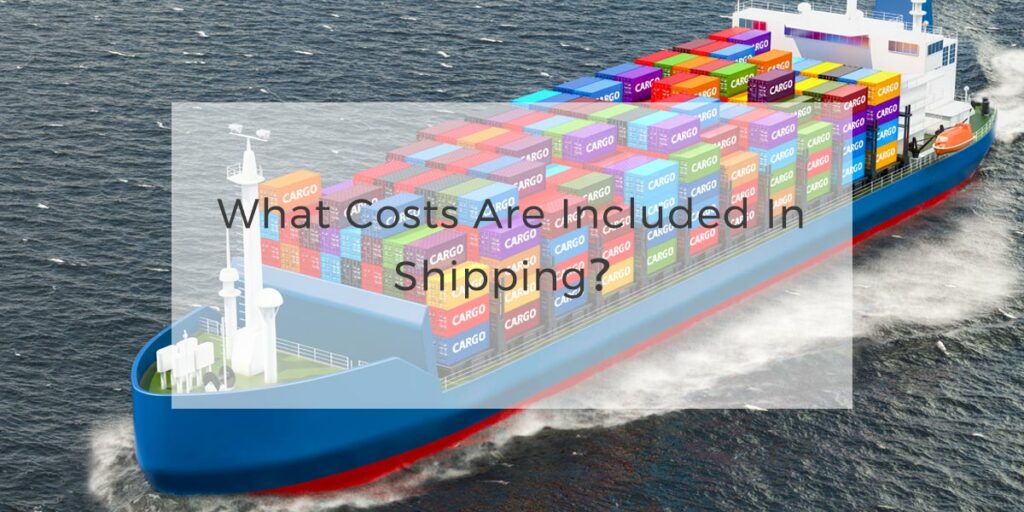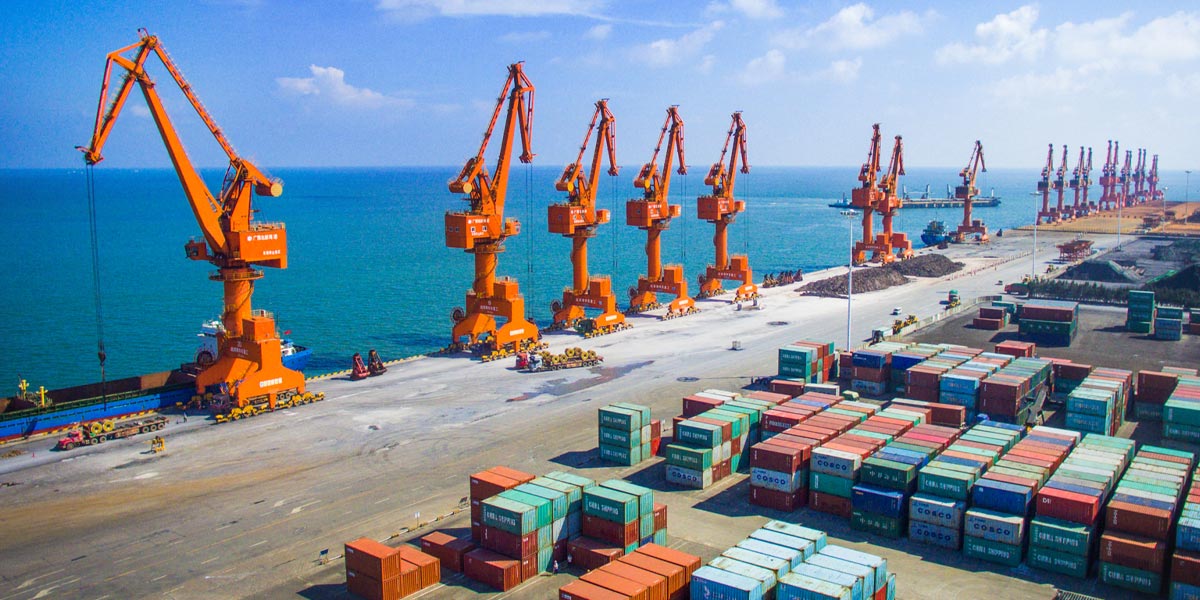Sea freight shipping has many advantages, especially in long-distance international cargo shipping. Compared to other modes of transportation, sea shipping is often more cost-effective; It establishes a global transportation network, connecting ports across different continents; It can carry a large volume of goods, including bulk cargo, containers, machinery, and equipment. It is highly economical and efficient for the long-distance transport of bulk goods, generally more stable, and less affected by weather and climate, among other advantages. Since sea shipping has so many benefits, how are its associated costs incurred? Is there anything specific to be aware of? Today, we will mainly share with you some of the main expenses within maritime shipping costs.
Freight Charges
The basic freight charges for sea shipping are calculated based on factors such as the volume, weight, and transportation distance of the goods, typically expressed in terms of per ton or cubic meter. Basic freight is a significant component of sea freight costs. Charges vary depending on the distance between different ports. Some countries, being close to the sea, have more ports and vessels, while others have fewer, which also affects basic freight rates.
Port Charges
Port charges in maritime shipping are levied based on the expenses incurred when utilizing specific port facilities and services. Here are some common methods of port charges, these charges are usually calculated per container or tonnage of cargo.
1. Berth Charges: Fees for using the port’s anchoring facilities, i.e., the location where a vessel anchors or docks.
2. Wharfage: Fees for using the wharf or quay for the loading and unloading of cargo.
3. Demurrage: Penalties imposed when cargo exceeds the agreed-upon time for staying in the port.
4. Towage: Fees for using tugboats to assist in the maneuvering of vessels within the port
5. Stevedoring Charges: Service charges provided by stevedores responsible for the actual loading and unloading of cargo.
6. Port Dues: Mandatory charges imposed by port authorities for the use of port facilities and services.
Bunker Adjustment Factor
Bunker Adjustment Factor, usually we will say the abbreviation, BAF. “Bunker” refers to the fuel used by ships. The fuel surcharge is an additional fee in sea freight charges designed to offset fluctuations in fuel prices. This fee is periodically adjusted based on changes in the actual fuel prices during transportation. The collection of the fuel surcharge is contingent upon the real-time variations in fuel prices. In response to fluctuations in international fuel prices, shipping companies will accordingly adjust this fee. The frequency of adjustments for the fuel surcharge may vary among shipping companies but is typically done regularly, potentially on a monthly or quarterly basis. The fuel surcharge is a flexible fee intended to address volatility in the energy market. Understanding the calculation method and adjustment mechanism of this fee is crucial for shippers and clients in planning transportation costs.
Destination Charges
Destination charges in sea shipping refer to the fees incurred at the port of destination for the handling, clearance, and delivery of the cargo. These charges are separate from the freight charges and are essential to consider when calculating the total cost of shipping. Destination charges can vary based on the destination port, the shipping line, and the services provided. Common components of destination charges include:
1. Unloading Charges: Fees associated with the unloading of cargo from the ship at the destination port.
2. Customs Clearance Fees: Charges for processing customs clearance paperwork and procedures at the destination port.
3. Delivery Charges: Fees for transporting the cargo from the port to the final destination may include trucking or other transportation modes.
4. Terminal Handling Charges (THC): Charges for the handling of cargo at the destination terminal, including loading and unloading operations.
5. Documentation Fees: Fees related to the preparation and processing of shipping documents at the destination.
6. Port Dues: Mandatory charges are imposed by the destination port authorities for the use of port facilities and services.
7. Storage Charges: Fees for storing cargo at the destination port, particularly if the cargo remains at the port for an extended period.
8. Customs Duties and Taxes: Import duties and taxes are imposed by the destination country’s customs authorities.
Shippers and consignees must be aware of destination charges when planning shipments, as these charges contribute significantly to the overall cost of sea shipping and can vary from one destination to another. Understanding the specific destination charges involved helps in accurate budgeting and logistics planning.
Slot Charter
A Slot Charter fee in sea freight shipping refers to an arrangement where a shipping line (carrier) charters or leases container slots to another party, typically another carrier, freight forwarder, or a Non-Vessel Operating Common Carrier (NVOCC). The term “slot” in this context refers to space on a container ship.
1. Space Allocation: The carrier (slot charterer) is allocated a certain number of container slots on a vessel by the owner of the vessel (the carrier providing the transportation service).
2. Lease Agreement: The carrier paying for the slots (slot charterer) enters into a lease or charter agreement with the vessel owner. This agreement outlines the terms, conditions, and costs associated with the charter.
3. Costs: The Slot Charter fee includes the cost associated with leasing the container slots. This can vary based on factors such as the route, the size of the containers, and the duration of the charter.
Slot charter arrangements are common in the container shipping industry, allowing flexibility and efficiency in the use of vessel capacity by different shipping entities.
Stevedoring Charges
In sea shipping costs, stevedoring charges refer to the costs associated with the loading and unloading process of goods at the port, like, Loading Charges, Unloading Charges, Equipment Usage Charges These charges are usually incurred for the services provided by a stevedore or a professional stevedore company. Typically, these charges are negotiated between the shipping company or cargo owner and the stevedoring company or port authority and are specified in the contract. Understanding handling charges is crucial to effectively planning shipping costs as they are an inevitable part of the shipping process.
Charter Hire
Charter hire in sea shipping refers to the cost or fee paid by the charterer to the shipowner for the use of the entire vessel or a specific part of it for a defined period. This arrangement is known as a charter party.
There are two main types of charter hire agreements:
1. Time Charter: In a time charter, the charterer rents the vessel for a specified period, often in terms of months or years.
2. Voyage Charter: In a voyage charter, the charterer hires the vessel for a specific voyage or journey. The shipowner is responsible for providing the vessel, and crew, and covering operating costs.
The charter hire amount is negotiated and agreed upon between the shipowner and the charterer before the charter party is executed. It is a crucial component of the overall cost structure in maritime transportation.
Vessel Chartering Fees
From the charter hire above, we know that there are time charters and voyage charters, so how do they charge them? Costs are affected by factors such as vessel type and size, route and distance, charter period, market conditions, and the specific terms negotiated between charterers and owners.
1. Time Charter: In a time charter, the charterer charters the vessel for a specific period, and the charter fee is usually calculated on a daily or monthly basis. Fees will depend on an agreed daily or monthly rate, which may vary depending on market conditions and vessel characteristics.
2. Voyage Charter: In a voyage charter, the charterer charters the vessel for a specific voyage or journey. The charter fee is usually a one-time fee for the entire voyage. This may also include additional charges such as port fees, fuel charges, and other costs associated with a particular journey.
To provide a specific boat charter fee amount, you will need to consult with a shipping company or broker who can provide a quote based on your specific shipping requirements. Depending on the factors previously mentioned, the cost can range from thousands of dollars to millions of dollars. It is important to note that the shipping industry is dynamic and rates may fluctuate based on market conditions.
Marine Insurance
Marine insurance is an essential component of sea shipping to protect against the risks associated with transporting goods across the ocean. The cost of marine insurance is influenced by several factors, and the calculation can vary based on the terms of the insurance policy and the specific needs of the shipper. Here are key factors that can affect how marine insurance is charged in sea shipping:
Type of Coverage:
1. All Risk Coverage: This provides broader coverage and is generally more expensive.
2. Named Perils Coverage: This covers specific risks and is usually less expensive than all-risk coverage.
Declared Value of Goods: The value of the goods being transported plays a significant role in determining the insurance premium. Higher-value shipments typically result in higher insurance costs.
Nature of Goods: The type of goods being transported can impact the insurance premium. Perishable or high-risk goods may have higher insurance costs.
Voyage Details, Deductibles, Risk Mitigation Measures, Market Conditions, and Other Factors.
Insurance rates can be influenced by market conditions within the marine insurance industry. Rates may vary based on supply and demand, the overall risk landscape, and global economic factors. Different insurance providers may offer varying rates, and the terms of the policy, including coverage limits and exclusions, can impact the cost. Shippers need to work closely with insurance brokers or providers to understand the specific terms of the insurance policy and to tailor coverage to their needs. The cost of marine insurance is typically calculated as a percentage of the declared value of the goods, and it is added to the overall sea shipping cost.
Exchange Rate Risk
The Currency Adjustment Surcharge is a fee incurred due to fluctuations in exchange rates. Some shipping companies adjust freight charges based on changes in exchange rates to mitigate currency risk.
In addition to the main fees we shared above, there are others, such as the Peak Season Surcharge: The Peak Season Surcharge is a temporary fee imposed during peak transportation seasons to address the surge in cargo volume. Peak seasons typically refer to major holidays such as Christmas and the Chinese New Year. And AMS (Automated Manifest System) fee as well!
The above are the fees included in sea freight that we wanted to share today. Of course, different payment terms may have different fee allocations. For more detailed information, it is recommended to consult with relevant logistics companies. If you find our articles helpful, feel free to share them with your friends! Give us a like and follow us to stay updated on the latest trends in international trade!




